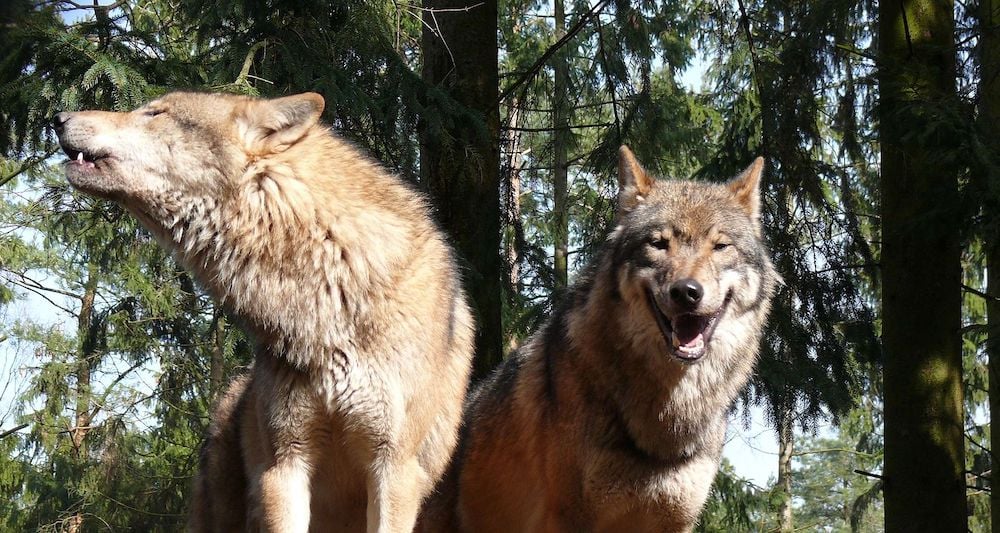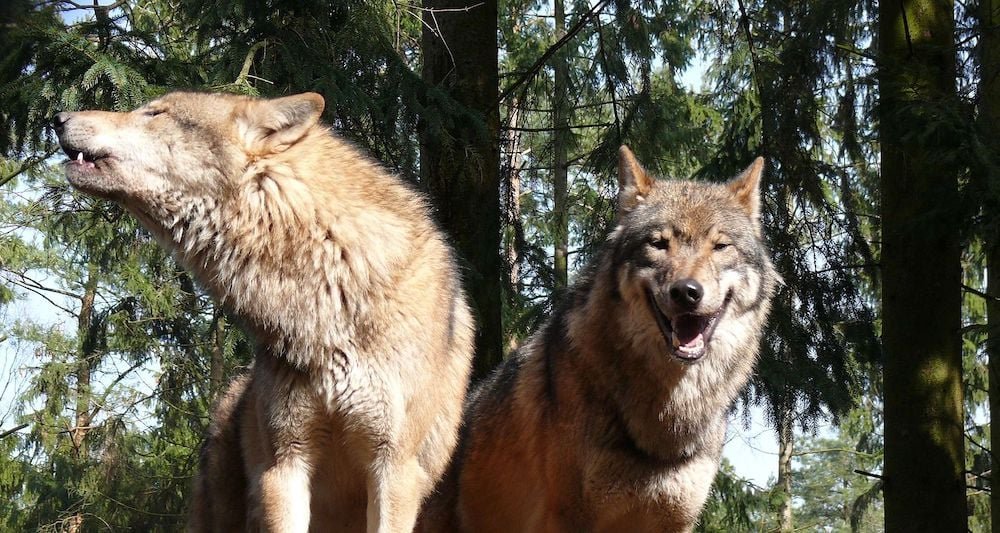
After having vanished for almost a century from the Peloponnese in southern Greece, wolves have returned to the peninsula’s Mount Taygetus, according to a recent announcement by Callisto, a Greek environmental organization.
The presence of wolves in the Peloponnese is scientifically proven for the first time in almost one hundred years through the environmental research conducted by Callisto. In a statement, the organization said cameras that had been placed in strategic points in November 2024 had recorded the presence of nine wolves (four adults and five young) in the area of Mount Taygetus, the mountain range near ancient Sparta. Moreover, their presence was further confirmed by wolf tracks and feces, and by a photo of a dead wolf hit by a car in the same area, presented to Callisto by a hunting organization.

Wolves vanished from the Peloponnese in the late 1930s due to human intervention and activities. The confirmed return of the species in the area is considered a landmark for biodiversity in Greece because it means that nature is slowly recovering. At the same time, it stresses the need for a balance between human activities (like livestock farming) and the protection of wildlife.
How Callisto conducted this year’s research on tracking wolves in the Peloponnese
Though there have been reports about the presence of wolves in the Peloponnese since 2019, Callisto conducted its first study last year in the northern Peloponnese, during the spring and summer. They used 14 automatic cameras for two months, operating 24 hours a day. However, at that time no presence of wolves was recorded.
After the killing of 40 goats and a dog in the area in October 2024, Callisto’s scientific teams placed four automatic cameras around where the animals were killed and researched a total of 30 kilometers of forest roads in November. Soon after, the wolves were spotted.
Apart from Mount Taygetus, the environmental organization conducted further research in other parts of the Peloponnese but there have been no indications that wolves have reappeared in other parts of the peninsula.
Callisto was founded in 2004 by a group of scientists dedicated to preserving and protecting Greek nature and wildlife. The organization’s main goals are studying, protecting, and managing “the populations and habitats of large carnivores, bears and wolves and other endangered species of wildlife.”
They also hope to “improve the coexistence of man and wildlife,” which includes educating the public on Greek wildlife, and how to act if they encounter a wolf.
The organization’s scientists monitor the populations of these carnivores in Greece, and helps to preserve their habitat by advocating against major human interventions, such as real estate developments, on land inhabited by the animals.
Wolves in Greece and the country’s endangered biodiversity
According to Callisto, there are currently 700 wolves (though other estimates say about 1,000) across most of mainland Greece north of the region of Boeotia. The wolf used to be found across the entire northern hemisphere yet, largely due to systematic hunting pushing it to the brink of extinction, it has lost most of his historical territory.
In Greece it survives in small packs, isolated from each other, and its presence is stronger close to areas with livestock farming or in big, mountainous ranges where human presence is very limited. The depletion of a wolf’s natural prey, including deer, roe deer and wild boars, forces the wild animal to move closer to where farmers breed sheep, cows and goats and this exacerbates the clash between wolves and humans.
The fauna in Greece is incredibly diverse. The mountainous regions of the country, especially the forests, play host to bears, wild cats, brown squirrels, jackals, wolves, foxes, deer and lynxes. A rare species of wild goat, known as kri-kri, inhabits the mountainous regions of Crete.
There are 116 species of mammals in Greece with 57 of them categorized as endangered species, including the brown bears of Epirus. For the protection of brown bears, wolves, snakes, and other endangered species, many environmental organizations have been established, such as Arcturos that works for the preservation of wildlife and the natural environment.
Recently, the Greek Environment Ministry re-evaluated the country’s Red List and said that more than a fifth of the 11,500 endangered animal, plant, and fungi species in Greece are “critically endangered” and thus are under threat of extinction.


